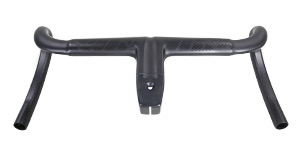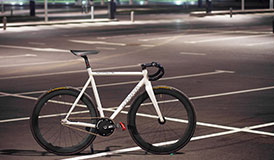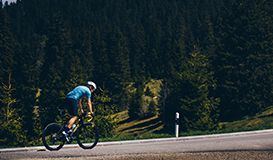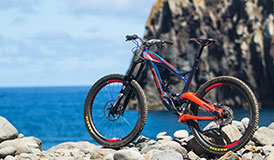Rider Profile

Name : Philippe
Origin : France/Hong Kong
Information : Height 175cm. Weight 70-73kg. I always had some kind of bike.
Specifications
Bike
Frameset : Carbonda 505 (M)
Groupset : Mostly Ultegra mechanical (shifters, derailleurs, originally 46/36 crankset)
Brakes : TRP mechanical
Quirks : Inline brake levers (32 teeth oval inner ring from TA evolution to replace 36 original)
Wheels-1
Rims : Light Bicycle R35 (F) R45 (R) without access holes (the R35 & R45 disc rims are not available online. Contact us to order them offline.)
Hubs : Novatec D411/D412SB 12/100mm 12/142mm Shimano Road 11s
Spokes : Sapim CX Ray
Nipples : Sapim aluminum black
Tires : Schwalbe Pro One tubeless 25mm front/30mm rear
Cassette : Sunrace 11-32
Wheels-2
Rims : Light Bicycle AR28 Disc (F) AR36 650b (R) without access holes (tubeless)
Hubs : Novatec D791/D792 28/28H
Spokes : Sapim CX Ray
Nipples : Sapim aluminum black
Tires : Panaracer gravelking SK, 700x38mm front/650x48mm rear
Cassette : Sunrace 11-36t
To explore the wilder side of Hong Kong, a rugged setup is required.
In Part 1, I described the first setup of my carbonda CFR 505 for the road with R45/R35 rims, but I purchased that frame because, while having an endurance road geometry, it offers clearance for wider tyres. The drawback being that the head angle, fork offset, and trail giving a lively and responsive handling on the road could make the bike feel a bit twitchy on the trail.
To explore the wilder side of Hong Kong (40% of the area is country parks, with mountains and beaches, not all trails are open to cycling though and there is a fair bit of stairs too, carrying the bike is often necessary) a rugged setup is required. I used to have a hardtail, but before reaching the trail, the necessary riding on the road felt like a chore. I already had experience with a cyclocross frame and that was ok (though I felt the bottom bracket was too high and the handlebar too low, requiring an unsightly amount of spacers), but the wheels were 700c, and the max tyre clearance was 35mm, not quite enough. With the right wheels, would the Carbonda 505 be the answer?


I was so happy with the Light Bicycle wheels and their custom-made approach.
Because the 505 frameset has disc brakes, it can work with both 700 or 650B wheels and I figured that putting a smaller wheel at the rear while keeping a big one at the front will slacken the geometry which is precisely what I wanted when using bigger tyres (fat tyres on 650 wheels size both rear and front, will add more volume and cushioning, but the steering will actually be quicker than with 700c wheels with equivalent tyres because of the smaller diameter). A smaller wheel at the rear also means lower gearing with an equivalent cassette (since the diameter is smaller) and lower stand-over height (good when in trouble).
That was the theory. Though putting a 27.5” wheel at the rear and a 29” at the front is not uncommon in the mountain bike world, I did not find any information on such a setting for gravel.
At first, I was thinking of getting cheapish aluminium wheels for gravel, but when I started to shop around locally, saying I wanted a 650 rear wheel and a 700 front, the usual response (when there was one) was a puzzled look and a scratch of the head. Right.
I was so happy with the Light Bicycle wheels and their custom-made approach that I went back to them. I passed the order again, this time with 28 J-bend spokes, guesstimating that the build will be both stronger and a bit more flexy and forgiving for gravel riding than the 24 straight-pull (higher spoke count, lower spoke tension required?). 650B AR36 for the rear, and 700c AR28 for the front, 22mm internal width.
When I received the picture of the wheelset, I was a bit puzzled: the rear wheel looked so much smaller than the front. Maybe it was a 26”? No Light Bicycle assured me it was 27.5”. I started to wonder if I got it totally wrong. Maybe the bike shop guys were right scratching their heads?
I finally received the wheels, yes the rear wheel was smaller, that's what I asked for. I got a 11-36 cassette for lower gearing than road wheels, fitted the tyres and there was just enough clearance for the 48mm at the rear, about 3-4 mm each side. The moment of truth was the first ride... and....it went as expected!




One bike, two pairs of wheels - truly an endurance road bike and truly a gravel bike for the price of one.
The feel on the tarmac with the 650Bx48/700x38C combination is more stable, less lively, and a bit boring of course compare to 700x30C/700x25C, because of slacker geometry and extra weight, especially on the part of the 650Bx48 tire. It takes some time to bring them to speed but I was pleasantly surprised as it is relatively easy to maintain a good pace when tyre pressure is high enough.
Putting a 700x38C at the front gives me less cushioning than 650Bx48 but it is not so important to me (and the later addition of a suspension stem helped in that department). I usually manage to place the front wheel where I want, avoiding major bumps or rocks, while the rear wheel has to somehow follow and put up with whatever is there. But the slacker geometry makes the steering more predictable, the position slightly more upright and pedal stroke less likely than with a 650Bx48.
The second pair of wheels from Light Bicycle proved as dependable as the first one though it went through much more heavy-duty terrain. It’s now two plus years, and no retruing so far!
Without pedals and the accessories I added, the weight was below 8kg in road trim and about 8.5kg in gravel trim. With flat pedals, in-line brakes, suspension stem, and I confess a more cushy saddle, it is now about 8.7 kg for the road and 9.3kg with gravel wheels. Total price, about $3,000USD, including all the bells and whistles.
One bike and two pairs of wheels - truly an endurance road bike and truly a gravel bike for the price of one.
Would I do it again? Yes, yes, yes!
A bike greatly improved by fantastic wheels was a lifesaver during Covid. Now, if I wanted only one set of wheels for road and gravel today, I would go for the AR25 disc: 250g rim, 24 mm inner width, and I would fit something akin to Schwalbe G-One RS.




Extras:
If you read the first part and are here for the technical bits about choosing a frame and adjusting it to your needs, here they come:
1. About geometry, a very useful website to compare different models of bikes (including factory framesets from China and Light Bicycle Journey Carbon disc). One could spend hours on that (At least, I did, that's one ;) ).
2. About inline brakes:
I find them very useful when riding on the top in the city or on the bicycle lane. I can have a relaxed position and brake immediately.
The other advantage is on the steep descent. It does allow for a more rearward positioning of the centre of gravity (in other words, sticking the bum further back), especially when combined with a lower seatpost position. An outer seat clamp with a manual tightening might not seem sleek but is so convenient. On the road, normal position, on gravel, I lower the seatpost by two or three cm in a few seconds. No need for multi-tool, no need for a heavy and expensive dropper post. Just stop, adjust, and go.
Another benefit of in-line brakes on steep downhill: better vision/less neck and back stress because of the higher position.
3. About the ovale inner chainring:
If you have ever climbed a steep slippery slope, you probably experienced skidding of the rear wheel when applying max power (roughly when the pedal is in the two to four o'clock position) whether with slick road tyres or knobby gravel tyres. In short, an ovale ring allows the power to spread on a wider range, making the power peak less high and less sharp, squashing and rounding it, but overall energy is the same. Because the progression is more regular, there is less chance of skidding and it is also easier to keep balance. It works fine with the front derailleur.
But I see no point in ovale outer chainring for recreational cycling. At higher speeds, the momentum is such that the progression is regular. They were once a thing in time trials but it seems not anymore.
4. About front suspension on gravel bikes:
Full-on suspension forks on gravel bikes are a trend these days. Why not for hard gravel? But it does add weight on the road. If you want the front suspension to go fast downhill, why not a hard tail instead? The beauty of a gravel bike on a tricky trail is that negotiating the terrain is a balancing act combining eye/body coordination, agility and burst of power just at the right time, it is not about speed (to me) but rather not putting a foot on the ground. Great exercise. A suspension stem is simple, light, and softens the hardest hits, but will not prevent you from going over the bars if the front wheel gets stuck against a rock. It also works for long rides on the road, reducing road buzz and fatigue.
May 16th, 2023 | Light Bicycle
MORE ADVENTURES
Get in touch
Feel free to leave a comment if you have any questions or suggestions on our products or other issues.

Please leave your name here.
E-mail is required for further contact.
Please enter a message.
We use cookies for a better experience. Learn more.
Your Cookie Preferences
We use cookies to improve your experience on this website. You may choose which types of cookies to allow and change your preferences at any time. Disabling cookies may impact your experience on this website. You can learn more by viewing our Cookie Policy.
-
Cookies required to enable basic website functionality.
-
Cookies used to understand how the website is being used.
-
Cookies that are used to enhance the functionality of the website.
-
Cookies used to deliver advertising that is more relevant to your interests.
Aceept All Cookies
Save Preferences
Reject All Cookies
Save Preferences
Reject All Cookies
Accept All Cookies





















